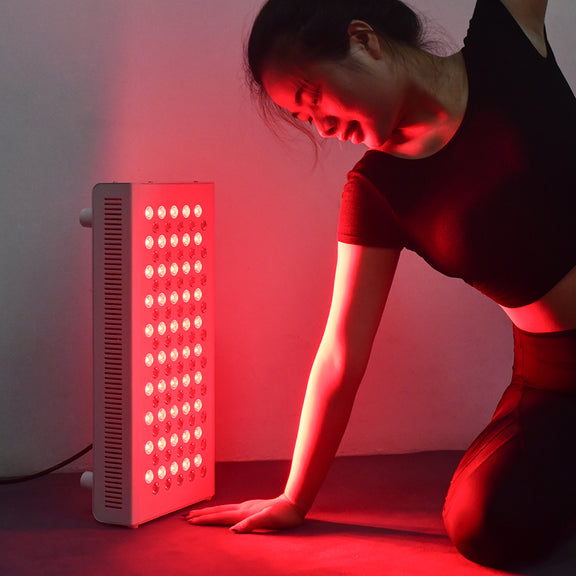As the sun takes its journey southward and daylight wanes into the long hours of the night, our energy levels often seem to follow suit. We find solace in the warmth and brightness of the summer, but the encroaching winter months can cast a shadow, both figuratively and literally, leading to a phenomenon known as the “winter blues.” However, with the advent of one of the most groundbreaking tools in the field of wellness, we have found a beacon of hope — the light therapy lamp.
Understanding Light Therapy
The notion that light can affect our well-being isn’t new; civilizations throughout history have recognized the power of light in its many forms. Fast forward to today, and we’re diving deep into the scientific understanding of just how profoundly light influences our health.
Shedding Light on Its Benefits
Firstly, light therapy, also known as phototherapy, harnesses the beneficial spectrum of light to impact everything from our hormonal balance to our overall mental disposition. It is celebrated for its ability to combat the symptoms of SAD, helmed by the characteristic winter depression that sets in for many as the days become shorter.
The Therapeutic Potential of Light Therapy Lamps
The effects of light therapy are astonishingly diverse, affecting both our physical and mental health. Here’s a glimpse into the transformative power these lamps can have.
Illuminating The Mind
Studies have shown that exposure to certain wavelengths of light, typically higher in blue and white spectra, can stimulate areas of the brain associated with mood regulation. This finding is of particular importance for those suffering from SAD, as regular use of light therapy lamps can lead to significant drops in depression scores.
Energizing The Body
Light therapy is not just a solar recipe for a happier mind; it also serves as a robust energy booster. With regular use, light therapy can reset your circadian rhythm, leading to better sleep and more daytime alertness, giving you a healthful energy surge.
Choosing the Right Light Therapy Lamp
Not all light therapy lamps are created equal. Amid the marketplace swarming with options, how can you differentiate the optimal solution for your home?
Criteria for Selection
Prescription for power? It’s all about the lux. Light intensity, measured in lux, is a critical factor in the lamp’s therapeutic potential. An effective light therapy lamp falls within the range of 10,000 lux at a specific distance, usually about 16 to 24 inches from your eyes.
The Brand Illumination
Here, we cast the spotlight onto a few leading light therapy lamps you can bring into your life. We dissect their features, their glow, and the user experience they promise.
Tips for Effective Light Therapy Sessions
A session with your light therapy lamp can be both therapy and meditation—a daily ceremony to rejuvenate your spirit. How can you ensure each encounter is as impactful as the first?
Craft a Luminous Sanctuary
The environment in which you engage with your light therapy lamp is elemental. Design a setting that nurtures calm. A quiet corner bathed in the morning sun is ideal, but when that’s nowhere in sight, make sure the lamp is the only star in your constellation.
Timing is Everything
The time of day you spend with your lamp is crucial. Mornings are typically recommended, as the “dose” then can jumpstart your day and make your entire morning routine a more palatable experience.
Resolve to Radiancy
Consistency is key. Make it a part of your life, a daily ritual that brightens your mood and recharges your soul. Start with 30 minutes a day, and adjust as you feel necessary.
Safety Precautions and Potential Side Effects
While light therapy is, in many aspects, a beacon of health, there are precautions to consider and side effects to be aware of.
Blinded by the Light: Decomposing Safety Features
When selecting your light therapy lamp, ensure it comes equipped with safety features such as UV filtration and stands compliant with ISO standards.
Under the Shade: Mitigating Side Effects
While it’s rare for light therapy to have adverse effects when used responsibly, it’s important to recognize the signs of overuse. Insomnia, eyestrain, and agitation can be a few. Gradually build up your sessions and, as with any new health regime, consult a professional if you have concerns.
Conclusion
Light therapy lamps are more than just sources of brightness in our lives; they are beacons guiding us back to a place of mental and physical equilibrium. They give us back the light we so sorely miss when the sun takes its seasonal sabbatical.
So, for anyone who feels the encroaching darkness keenly or longs for a burst of life to invigorate the daily grind, consider this: the light therapy lamp could be the answer you seek. Let these lights inspire you, uplift you, and guide you toward a brighter, warmer, and longer-lit tomorrow. Your health, by the light of day, and the genius of science, awaits.
